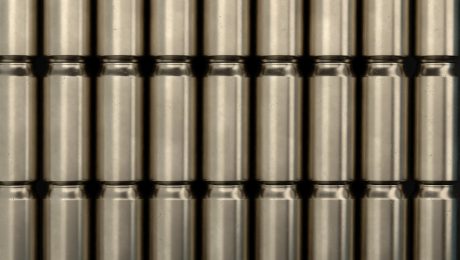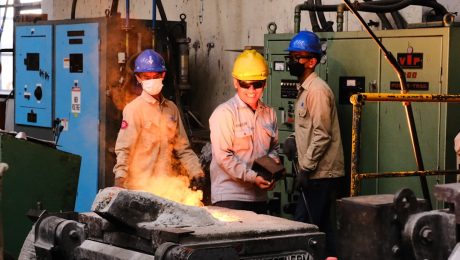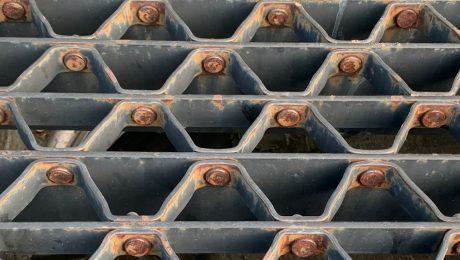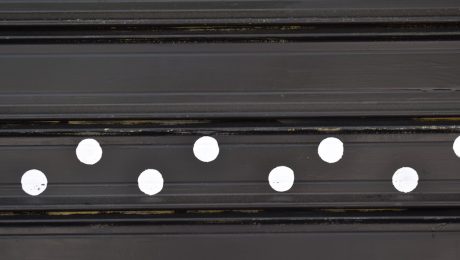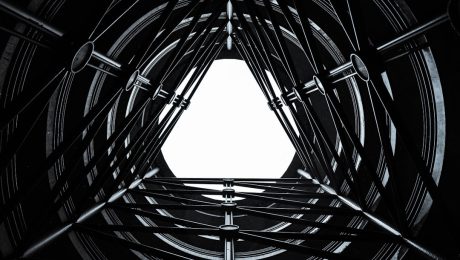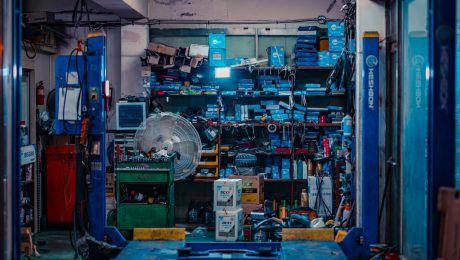In today’s fast-paced global market, efficient steel sourcing and management are crucial for success. GlobalSteel’s comprehensive web tools offer a powerful solution, streamlining your operations and providing valuable insights. This guide delves into the key features and benefits of leveraging these tools to optimize your steel supply chain.
1. Streamlining Steel Sourcing with GlobalSteel’s Platform
Finding the right steel at the right price can be a time-consuming process. GlobalSteel’s platform simplifies this significantly. Its robust search engine allows you to specify your requirements – grade, size, quantity, and location – to quickly identify potential suppliers. The platform provides access to a vast network of verified suppliers, ensuring a reliable source of high-quality steel. Furthermore, you can compare prices and delivery times from multiple suppliers simultaneously, enabling informed decision-making and potentially significant cost savings. The platform also offers tools to manage requests for quotations (RFQs), track responses, and negotiate favorable terms. This centralized system eliminates the need for multiple emails and phone calls, improving communication and efficiency.
2. Real-Time Inventory Management for Optimized Stock Control
Effective inventory management is essential for minimizing storage costs and preventing stockouts. GlobalSteel’s web tools provide real-time visibility into your steel inventory. You can track stock levels, monitor consumption rates, and anticipate future needs with greater accuracy. The platform integrates with your existing systems, allowing for seamless data transfer and eliminating manual data entry. This reduces the risk of errors and ensures that your inventory data is always up-to-date. Furthermore, the system provides insightful reporting and analytics, enabling you to identify trends, optimize stock levels, and reduce waste. This allows for proactive adjustments to your purchasing strategy, ensuring you always have the right amount of steel on hand without tying up excessive capital.
3. Leveraging GlobalSteel’s Pricing and Market Analysis Tools
Understanding steel price fluctuations is critical for effective cost management. GlobalSteel’s platform provides access to real-time pricing data and market analysis tools. This allows you to track price trends, identify opportunities for cost savings, and make informed purchasing decisions. The platform’s sophisticated analytics engine can predict future price movements, enabling you to hedge against risks and secure favorable pricing agreements. This proactive approach to price management can significantly impact your bottom line, allowing you to better control costs and improve profitability. The detailed market reports offer insights into supply and demand dynamics, helping you anticipate potential shortages or surpluses and adjust your strategies accordingly.
4. Enhancing Collaboration and Communication with Integrated Communication Tools
Effective communication is key to a smooth steel supply chain. GlobalSteel’s platform incorporates integrated communication tools that facilitate collaboration between buyers, suppliers, and internal stakeholders. You can easily exchange documents, track orders, and communicate updates in real-time. The platform’s secure messaging system ensures confidentiality and efficient information sharing. This centralized communication hub minimizes misunderstandings and delays, leading to a more streamlined and efficient process. The platform also provides tools for managing project timelines and ensuring all parties are aligned on key milestones. This improved collaboration fosters stronger relationships with suppliers and enhances overall operational efficiency.
5. Utilizing GlobalSteel’s Reporting and Analytics for Data-Driven Decisions
GlobalSteel’s web tools offer comprehensive reporting and analytics capabilities, providing valuable insights into your steel procurement and management processes. The platform generates customized reports on key performance indicators (KPIs), such as cost per ton, inventory turnover, and supplier performance. This data-driven approach enables you to identify areas for improvement, optimize your strategies, and make informed decisions. The platform’s intuitive dashboards provide a clear overview of your key metrics, allowing you to quickly assess the health of your steel supply chain. By analyzing historical data and identifying trends, you can proactively address potential challenges and improve overall efficiency. This data-driven approach is crucial for continuous improvement and maximizing the return on investment in your steel management processes.
GlobalSteel’s web tools are more than just a platform; they are a strategic asset for optimizing your steel supply chain. By leveraging these powerful features, you can streamline your operations, reduce costs, and improve efficiency. Embrace the power of data-driven decision-making and unlock the full potential of your steel management processes.
SEO-Friendly Tags:
- GlobalSteel Web Tools
- Steel Supply Chain Management
- Steel Inventory Management Software
- Steel Sourcing Platform
- Steel Price Analysis Tools
body { font-family: sans-serif; line-height: 1.6; }
h1, h2, h3 { color: #333; }
img { max-width: 100%; height: auto; }
Power plants, the behemoths of energy generation, rely on robust and reliable infrastructure. While the turbines and generators often steal the spotlight, the backbone of these structures – the steel profiles – play a crucial, often unseen, role in ensuring safe and efficient operation. This post delves into the multifaceted world of steel profiles in power plant construction, exploring their applications, material selection, and the importance of quality control.
The Diverse Applications of Steel Profiles in Power Plants
Steel profiles, encompassing a wide range of shapes like I-beams, H-beams, channels, angles, and tubes, find extensive use throughout power plants. Their versatility allows them to serve diverse structural and functional purposes. These include:
- Structural Support: The mainframes of buildings, turbine halls, and control rooms are often constructed using robust steel profiles, providing the necessary strength and stability to withstand various loads and environmental conditions.
- Equipment Support: Heavy machinery like turbines, generators, and boilers require strong and precise support structures, often fabricated from steel profiles. These structures need to be able to handle vibrations and thermal expansion.
- Piping and Ductwork: Steel profiles form the framework for supporting extensive piping systems carrying steam, water, and other crucial fluids. They also support ventilation and exhaust ductwork.
- Stairways and Platforms: Steel profiles are commonly used to create safe and accessible stairways and platforms within the plant, facilitating maintenance and operation.
- Crane Rails and Gantry Systems: Heavy-duty steel profiles are essential for constructing crane rails and gantry systems used for lifting and moving heavy equipment during construction and maintenance.
Material Selection: Choosing the Right Steel for the Job
The selection of steel profiles for power plant applications is critical. Factors influencing material choice include:
- Strength and Yield Strength: High strength steel is crucial for supporting heavy loads and resisting stress. Yield strength determines the point at which the steel begins to deform permanently.
- Corrosion Resistance: Power plants often operate in harsh environments, exposing steel to moisture, chemicals, and high temperatures. Corrosion-resistant steels, such as stainless steel or those with protective coatings, are frequently employed.
- Temperature Resistance: Certain areas within the power plant experience extreme temperatures. Steel profiles must be selected to withstand these temperatures without significant loss of strength or dimensional stability.
- Weldability: Many steel profiles are joined through welding. The chosen steel must be readily weldable without compromising the integrity of the weld or the surrounding material.
- Fatigue Resistance: Repeated cyclical loading can lead to fatigue failure. Steel profiles must possess sufficient fatigue resistance to withstand the constant vibrations and stresses experienced in a power plant.
Manufacturing Processes and Quality Control
The manufacturing of steel profiles for power plants involves stringent quality control measures at every stage. This includes:
- Raw Material Inspection: The quality of the raw steel is crucial. Rigorous testing ensures the chemical composition and mechanical properties meet the specified requirements.
- Profile Rolling and Forming: Precise rolling and forming processes guarantee the dimensional accuracy and surface finish of the steel profiles.
- Welding and Fabrication: Welding procedures must adhere to strict codes and standards to ensure strong and reliable joints. Non-destructive testing (NDT) techniques, such as radiographic inspection and ultrasonic testing, are used to verify weld quality.
- Surface Treatment and Coatings: Protective coatings, such as galvanization or painting, enhance corrosion resistance and extend the lifespan of the steel profiles.
- Regular Inspections and Audits: Throughout the manufacturing and construction process, regular inspections and audits ensure adherence to safety standards and quality control protocols.
Safety Standards and Regulations
The construction and operation of power plants are subject to stringent safety regulations. Steel profiles used in these projects must comply with relevant national and international standards, such as:
- ASTM (American Society for Testing and Materials): ASTM standards define the properties and testing methods for various types of steel.
- EN (European Norms): Similar standards are set by the European Union to regulate the quality and safety of steel profiles used in European power plants.
- ASME (American Society of Mechanical Engineers): ASME codes address the design, fabrication, and inspection of pressure vessels and piping systems, many of which incorporate steel profiles.
- Local Building Codes: Local building codes often specify requirements for structural steel, ensuring compliance with regional safety standards.
Adherence to these standards is crucial for ensuring the safety of workers and the public, as well as the reliable operation of the power plant.
The Future of Steel Profiles in Power Plant Construction
The energy industry is undergoing a significant transformation, with a growing emphasis on renewable energy sources. However, steel profiles will continue to play a vital role, even in renewable energy projects, such as wind farms and solar power plants. Advancements in steel technology, such as the development of high-strength low-alloy (HSLA) steels and advanced coatings, will further enhance the performance and lifespan of steel profiles in these demanding applications. Sustainability initiatives will also drive the use of recycled steel, reducing the environmental impact of power plant construction.
In conclusion, steel profiles are indispensable components in the construction and operation of power plants. Their strength, versatility, and reliability ensure the safe and efficient generation of electricity. The meticulous attention to material selection, manufacturing processes, and quality control guarantees the long-term performance and safety of these critical structures.
SEO Tags:
- Steel Profiles
- Power Plant Construction
- Structural Steel
- Energy Industry Steel
- Industrial Steel Applications
body { font-family: sans-serif; line-height: 1.6; }
h1, h2, h3 { color: #333; }
h1 { font-size: 2.5em; }
h2 { font-size: 2em; }
h3 { font-size: 1.5em; }
The steel industry is a complex landscape, filled with a dizzying array of grades, specifications, and manufacturing processes. For steel buyers, navigating this landscape without expert guidance can lead to costly mistakes, project delays, and compromised quality. This is where technical consulting for steel buyers becomes invaluable.
Understanding Your Steel Requirements: The Foundation of Success
Before even considering specific steel grades, a thorough understanding of your project’s requirements is paramount. Technical consultants work with you to define crucial parameters such as:
- Application and environment: Will the steel be used in a high-stress environment, exposed to harsh weather conditions, or require specific corrosion resistance?
- Mechanical properties: What levels of tensile strength, yield strength, elongation, and hardness are needed to meet performance expectations?
- Dimensional tolerances: How precise do the steel components need to be? Tight tolerances often command higher prices.
- Manufacturing process compatibility: Will the chosen steel be suitable for the intended fabrication methods (e.g., welding, machining, forming)?
- Budget and timeline: These constraints significantly influence the selection process, guiding choices towards cost-effective and readily available options.
By carefully analyzing these factors, consultants help you establish a clear and achievable specification, preventing costly over-engineering or compromises in quality.
Optimizing Steel Grade Selection: Balancing Cost and Performance
With a defined set of requirements, the next step involves selecting the optimal steel grade. This is where the expertise of a technical consultant truly shines. They possess in-depth knowledge of various steel grades, their properties, and their relative costs. They can:
- Identify suitable alternatives: Often, multiple steel grades can meet the specified requirements. Consultants help you identify the most cost-effective option without sacrificing performance.
- Evaluate material certifications: Ensuring compliance with relevant standards and specifications is crucial. Consultants verify certifications and ensure the steel meets the required quality standards.
- Negotiate with suppliers: Their industry knowledge helps leverage better pricing and delivery terms from steel suppliers.
- Analyze lifecycle costs: They consider not only the initial purchase price but also the long-term costs associated with maintenance, repairs, and potential replacements.
By meticulously evaluating various options, consultants help you achieve the best balance between cost and performance, maximizing your return on investment.
Navigating Steel Supply Chain Challenges: Ensuring Timely Delivery
The steel supply chain can be volatile, with fluctuating prices, potential delays, and occasional shortages. Technical consultants provide valuable support in navigating these challenges by:
- Identifying reliable suppliers: They have established relationships with reputable steel suppliers, ensuring a consistent supply of high-quality materials.
- Managing inventory: They help optimize inventory levels to minimize storage costs while ensuring sufficient stock to meet production demands.
- Negotiating favorable contracts: Their expertise helps secure contracts with favorable pricing, delivery schedules, and payment terms.
- Monitoring market trends: They stay abreast of market fluctuations and advise on strategic purchasing decisions to mitigate risks associated with price volatility.
Their proactive approach helps mitigate supply chain risks, ensuring timely delivery of materials and preventing project delays.
Quality Control and Assurance: Ensuring Material Integrity
Maintaining quality control throughout the steel procurement process is essential. Technical consultants play a critical role by:
- Specifying testing requirements: They define the necessary tests (e.g., tensile testing, chemical analysis, impact testing) to ensure the steel meets the required specifications.
- Overseeing inspections: They can oversee inspections at the supplier’s facility or at the point of delivery to verify material quality.
- Implementing quality control procedures: They help establish robust quality control procedures throughout the entire process, from procurement to fabrication.
- Managing non-conforming materials: They guide you through the process of handling non-conforming materials, minimizing disruption and ensuring compliance.
Their focus on quality control ensures that you receive materials that meet the required standards, preventing costly rework or project failures.
Reducing Costs and Improving Efficiency: The Bottom Line
The ultimate goal of technical consulting is to help steel buyers reduce costs and improve efficiency. By optimizing steel selection, streamlining the procurement process, and ensuring quality control, consultants achieve significant cost savings. This translates to:
- Lower material costs: By selecting the most cost-effective steel grades and negotiating favorable contracts.
- Reduced waste: Through precise material selection and optimized inventory management.
- Minimized rework: By ensuring quality control throughout the process.
- Improved project timelines: By avoiding delays caused by material shortages or quality issues.
The investment in technical consulting often yields significant returns, leading to a more profitable and efficient operation.
In conclusion, technical consulting for steel buyers is an investment that pays off handsomely. By leveraging the expertise of experienced consultants, businesses can navigate the complexities of the steel industry, optimize their purchasing decisions, and achieve significant cost savings while ensuring high-quality materials and timely project completion.
SEO Tags:
- Steel Buying Consulting
- Technical Steel Procurement
- Steel Grade Selection
- Steel Supply Chain Management
- Steel Quality Control
Equal angle bars, also known as angle irons or simply angles, are ubiquitous in various industries. These L-shaped steel sections, with equal leg lengths, offer a remarkable combination of strength, versatility, and cost-effectiveness. This comprehensive guide delves into the world of equal angle bars, exploring their properties, manufacturing processes, diverse applications, and advantages.
Understanding the Properties of Equal Angle Bars
Equal angle bars are typically manufactured from mild steel, although other materials like stainless steel, aluminum, and even specialized alloys are available depending on the application. Key properties that contribute to their widespread use include:
- High Tensile Strength: Their L-shape provides excellent resistance to bending and torsional forces, making them ideal for structural applications.
- Weldability: Equal angle bars readily weld to other steel components, facilitating easy fabrication and assembly.
- Ductility: They can be easily bent and shaped, allowing for customization to fit specific project requirements.
- Cost-Effectiveness: Compared to other structural shapes, equal angle bars often provide a more economical solution for many applications.
- Availability: They are readily available in various sizes and lengths from steel suppliers worldwide.
Manufacturing Processes of Equal Angle Bars
The production of equal angle bars typically involves a hot-rolling process. Molten steel is cast into a continuous billet, which is then passed through a series of rollers to shape it into the desired L-shape. The process is highly automated and ensures consistent dimensions and quality. After hot rolling, the bars undergo cooling and may be subjected to further processing, such as straightening, cutting to length, and surface treatment (e.g., galvanizing for corrosion resistance).
Precision is crucial in the manufacturing process. Slight variations in dimensions can affect the structural integrity of the final product. Therefore, stringent quality control measures are implemented throughout the production line to ensure the bars meet the required specifications.
Diverse Applications of Equal Angle Bars in Construction
In the construction industry, equal angle bars serve as indispensable components in a wide range of applications:
- Structural Framing: They are used to create strong and rigid frames for buildings, bridges, and other structures.
- Support Beams and Braces: Their high tensile strength makes them ideal for supporting heavy loads and providing lateral stability.
- Reinforcement: They can be used to reinforce concrete structures, increasing their overall strength and durability.
- Staircase Construction: Equal angle bars form the foundational elements of many staircase designs, providing support for steps and railings.
- Metal Roofing and Cladding: They are used as framing members for supporting roofing sheets and cladding panels.
Beyond Construction: Other Uses of Equal Angle Bars
The versatility of equal angle bars extends far beyond construction. They find applications in diverse sectors, including:
- Manufacturing and Fabrication: Used extensively in the creation of machinery, equipment, and custom metalwork.
- Automotive Industry: Used in chassis construction, providing strength and rigidity to vehicle frames.
- Furniture Making: They can form the base for various furniture pieces, providing both structural support and a unique aesthetic.
- Agricultural Equipment: Used in the construction of farm machinery and implements.
- Decorative Applications: With appropriate finishing, equal angle bars can be used to create visually appealing designs in both interior and exterior settings.
Selecting the Right Equal Angle Bar: Size, Material, and Finish
Choosing the correct equal angle bar for a specific application requires careful consideration of several factors:
- Size: The dimensions (leg length and thickness) must be adequate to support the anticipated loads.
- Material: The choice of material (mild steel, stainless steel, etc.) depends on the environmental conditions and required properties (corrosion resistance, strength).
- Finish: Different finishes (e.g., galvanized, painted, powder-coated) offer varying levels of corrosion protection and aesthetic appeal.
- Grade: Steel grades (e.g., A36, ASTM A572) influence the yield strength and other mechanical properties.
Consulting with a structural engineer or experienced metalworker is crucial for selecting the appropriate equal angle bar for your project to ensure structural integrity and safety.
Equal angle bars are truly versatile and indispensable components across numerous industries. Understanding their properties, manufacturing processes, and diverse applications is key to leveraging their full potential in your projects.
body {
font-family: sans-serif;
line-height: 1.6;
}
h1, h2, h3 {
color: #333;
}
Net terms, a cornerstone of business-to-business (B2B) transactions, represent the payment period a buyer has to settle an invoice. Understanding net terms is crucial for both buyers and sellers, impacting cash flow, creditworthiness, and overall financial health. This comprehensive guide will dissect the complexities of net terms, providing you with the knowledge to navigate this critical aspect of commerce successfully.
Understanding the Basics of Net Terms
Net terms, often expressed as “Net 30,” “Net 60,” or “Net 90,” signify the number of days a buyer has to pay an invoice from its issue date. “Net 30,” for instance, means the payment is due 30 days after the invoice date. These terms are agreed upon between the buyer and seller and are usually outlined in contracts or purchase orders. Understanding these terms is vital because they directly influence a company’s cash flow and ability to manage its finances effectively. Failing to adhere to net terms can lead to late payment fees, damaged credit ratings, and strained business relationships.
Calculating Due Dates with Net Terms
Calculating due dates is straightforward once you understand the net terms. Let’s say an invoice is issued on October 26th with Net 30 terms. To calculate the due date, simply add 30 days to the invoice date. This means the payment is due on November 25th. However, weekends and holidays can complicate matters. Many businesses operate on a “business days” calendar, excluding weekends and holidays. In this case, if November 25th falls on a weekend, the due date might be adjusted to the next business day. Always clarify the calculation method with your supplier to avoid any misunderstandings and potential late payment fees.
The Impact of Creditworthiness on Net Terms
Your creditworthiness significantly influences the net terms offered to you. Established businesses with a strong credit history are often offered more favorable terms, such as Net 60 or even Net 90. This allows them more time to manage their cash flow. Conversely, new businesses or those with poor credit history may only receive Net 15 or even cash-on-delivery terms. Building a strong credit history is therefore crucial for securing better payment terms and accessing more flexible financing options. This involves consistently paying invoices on time, maintaining a healthy credit score, and providing accurate financial information to your suppliers.
Negotiating Net Terms: Strategies for Buyers and Sellers
Negotiating net terms is a common practice in B2B transactions. Buyers might seek longer payment terms to improve their cash flow, while sellers might prefer shorter terms to accelerate their revenue collection. For buyers, strong credit history and large order volumes can be leverage points for securing more favorable terms. Sellers might offer incentives for early payment, such as discounts, to encourage prompt settlements. Effective negotiation requires clear communication, understanding the other party’s needs, and being prepared to compromise. Maintaining a positive and collaborative relationship is key to successful negotiations.
Optimizing Cash Flow with Effective Net Term Management
Effective net term management is crucial for optimizing cash flow. For buyers, it’s essential to track all invoices, ensure timely payments, and utilize tools to manage payable accounts effectively. This could include invoicing software or accounting systems. For sellers, offering various payment options, such as early payment discounts or invoice financing, can improve cash flow and customer relationships. Regularly reviewing and adjusting net terms based on market conditions and business performance can also contribute to a healthier financial position. Proactive monitoring of accounts receivable and accounts payable is vital for both buyers and sellers to ensure efficient cash flow management.
Understanding and effectively managing net terms is a fundamental aspect of successful business operations. By mastering these concepts, businesses can significantly improve their financial health and build strong relationships with their suppliers and customers.
SEO-Friendly Tags:
- Net Terms
- Payment Terms
- Business Finance
- Invoice Financing
- Cash Flow Management
body { font-family: sans-serif; line-height: 1.6; }
h1, h2, h3 { color: #333; }
img { max-width: 100%; height: auto; }
Steel, a ubiquitous material in construction and engineering, faces a formidable adversary in saltwater environments. The relentless assault of seawater, with its dissolved salts, oxygen, and microorganisms, accelerates corrosion, significantly reducing the lifespan of steel structures. Understanding the mechanisms of saltwater corrosion and employing effective mitigation strategies is crucial for ensuring the longevity and safety of coastal infrastructure, marine vessels, and offshore platforms.
The Mechanisms of Saltwater Corrosion on Steel
Saltwater corrosion is a complex electrochemical process. When steel is exposed to saltwater, an electrochemical cell is formed. The steel acts as an anode, losing electrons and oxidizing to form iron ions (Fe2+). These ions then react with oxygen and water to form iron oxides and hydroxides, commonly known as rust. The cathodic reaction, where oxygen gains electrons, typically occurs at less reactive areas on the steel surface. The presence of chloride ions (Cl–) in saltwater is particularly damaging. They penetrate the passive oxide layer formed on the steel surface, disrupting its protective function and accelerating the corrosion process. This process is further exacerbated by factors such as temperature, salinity, oxygen concentration, and the presence of other dissolved substances.
Choosing the Right Steel Alloy for Saltwater Applications
Not all steels are created equal when it comes to saltwater resistance. The choice of steel alloy is a critical factor in determining its durability in these harsh environments. High-strength low-alloy (HSLA) steels, while offering excellent strength, generally possess limited corrosion resistance in saltwater. Stainless steels, particularly those containing high levels of chromium (e.g., 316 stainless steel), exhibit significantly enhanced corrosion resistance due to the formation of a protective chromium oxide passive layer. However, even stainless steels can be susceptible to corrosion in highly aggressive saltwater environments, especially in the presence of chlorides. Weathering steels, also known as Corten steel, develop a stable rust layer that protects the underlying steel from further corrosion. While aesthetically pleasing, their corrosion resistance is not as high as stainless steel and requires careful consideration of the application.
Protective Coatings: A Crucial Defense Against Saltwater Corrosion
Protective coatings play a vital role in extending the lifespan of steel in saltwater environments. A variety of coatings are available, each with its own strengths and weaknesses. Zinc-rich primers provide cathodic protection, sacrificing themselves to protect the steel. Epoxy coatings offer excellent barrier protection, preventing saltwater from reaching the steel surface. Other options include polyurethane, vinyl, and acrylic coatings. The selection of the appropriate coating system depends on factors such as the severity of the environment, the required lifespan, and cost considerations. Proper surface preparation before coating application is crucial for ensuring adhesion and optimal performance. Regular inspection and maintenance of coatings are also essential to prevent degradation and maintain their protective function.
Cathodic Protection: An Electrochemical Solution for Saltwater Corrosion
Cathodic protection is an electrochemical technique used to mitigate corrosion by making the steel structure the cathode in an electrochemical cell. This is achieved by applying a negative potential to the steel, preventing it from oxidizing. There are two main methods of cathodic protection: sacrificial anodes and impressed current cathodic protection (ICCP). Sacrificial anodes, typically made of zinc or magnesium, corrode preferentially, protecting the steel structure. ICCP involves using an external power source to provide the necessary current to protect the steel. Cathodic protection is particularly effective in highly corrosive saltwater environments and is commonly employed for pipelines, marine structures, and offshore platforms. Careful design and monitoring are necessary to ensure effective and efficient protection.
Maintenance and Inspection: Extending the Life of Steel in Saltwater
Regular inspection and maintenance are vital for maximizing the lifespan of steel structures in saltwater environments. Regular visual inspections should be conducted to identify signs of corrosion, such as rust, pitting, or cracking. Non-destructive testing (NDT) techniques, such as ultrasonic testing and magnetic particle inspection, can be used to detect subsurface corrosion. Repairing damaged areas promptly is crucial to prevent further corrosion. This may involve removing corroded material, applying protective coatings, or implementing cathodic protection. A well-defined maintenance plan, tailored to the specific conditions and the type of steel used, is essential for ensuring the long-term integrity and safety of steel structures in saltwater environments.
By carefully considering the factors discussed above, engineers and designers can significantly improve the durability of steel structures in saltwater environments. The combination of appropriate alloy selection, protective coatings, cathodic protection, and a comprehensive maintenance program is key to conquering the corrosive challenges of the coast.
SEO-Friendly Tags:
- Saltwater Corrosion
- Steel Durability
- Marine Steel
- Corrosion Protection
- Cathodic Protection
body {
font-family: sans-serif;
line-height: 1.6;
}
h1, h2, h3 {
color: #333;
}
h1 {
font-size: 2.5em;
}
h2 {
font-size: 2em;
}
h3 {
font-size: 1.5em;
}
The safe and efficient transportation of natural gas relies heavily on the integrity of the pipelines. Corrosion is a significant threat, leading to leaks, environmental damage, and economic losses. To combat this, various protective coatings are applied to gas pipelines, with EP (Epoxy Powder), PP (Polypropylene), and PE (Polyethylene) coatings being prominent choices. This comprehensive guide delves into the specifics of these coatings, exploring their applications, advantages, disadvantages, and future prospects within the gas pipeline industry.
Understanding EP, PP, and PE Coatings: A Comparison
Each coating offers unique properties: EP coatings are known for their excellent adhesion and corrosion resistance, often applied in a fusion-bonded epoxy (FBE) process for superior durability. PP coatings, featuring high temperature resistance and excellent chemical resistance, are ideal for challenging environments. PE coatings, characterized by their flexibility and ease of application, are cost-effective and suitable for a wide range of applications. The choice between these coatings depends on factors like soil conditions, pipeline diameter, operating pressure, and budget.
Here’s a table summarizing their key differences:
| Property | EP (Epoxy Powder) | PP (Polypropylene) | PE (Polyethylene) |
|---|---|---|---|
| Corrosion Resistance | Excellent | Good | Good |
| Temperature Resistance | Moderate | Excellent | Moderate |
| Flexibility | Low | Moderate | High |
| Cost | Moderate | High | Low |
| Application | Fusion bonded epoxy (FBE) | Extrusion or powder coating | Extrusion |
Applications of EP/PP/PE Coated Pipes in Gas Pipelines
EP, PP, and PE coated pipes find widespread use in various segments of the gas pipeline network. They are crucial for onshore pipelines, protecting against soil corrosion and external damage. Offshore pipelines, exposed to harsh marine environments, often utilize coatings with enhanced UV resistance and improved protection against saltwater corrosion. Furthermore, these coatings are applied to pipelines transporting various gas types, including natural gas, liquefied petroleum gas (LPG), and biogas, demonstrating their versatility.
Advantages and Disadvantages of Using Coated Pipes
Advantages:
- Extended Pipeline Lifespan: Coatings significantly extend the lifespan of pipelines by preventing corrosion and external damage.
- Reduced Maintenance Costs: By preventing corrosion, the need for frequent repairs and replacements is minimized, leading to significant cost savings.
- Improved Safety: Preventing leaks and failures enhances the safety of gas transportation, mitigating risks to the environment and communities.
- Enhanced Environmental Protection: Preventing corrosion minimizes the release of harmful substances into the environment.
Disadvantages:
- Initial Cost: The application of coatings adds to the initial cost of pipeline construction.
- Application Complexity: The application process requires specialized equipment and skilled labor.
- Potential for Coating Defects: Improper application can lead to coating defects, compromising the effectiveness of the protection.
- Limited Temperature Range (for some coatings): Certain coatings may have limitations regarding operating temperature ranges.
Installation and Maintenance of Coated Gas Pipelines
The installation of coated gas pipelines involves careful handling to avoid damaging the coating. Specialized equipment and trained personnel are essential to ensure proper installation and minimize the risk of coating defects. Regular inspection and maintenance are crucial to identify and address any coating damage or degradation. This might involve visual inspections, non-destructive testing methods, and periodic recoating of sections as needed. Proper cathodic protection systems are often implemented in conjunction with the coating to provide additional corrosion protection.
Future Trends in EP/PP/PE Coated Gas Pipelines
The gas pipeline industry is constantly evolving, with ongoing research and development focused on improving coating technologies. This includes exploring new materials with enhanced durability, corrosion resistance, and temperature tolerance. Smart coatings, incorporating sensors for real-time monitoring of pipeline condition, are also gaining traction. Furthermore, the development of more sustainable and environmentally friendly coating materials and application methods is a key area of focus.
The use of advanced techniques like 3D printing for customized coating application and the integration of data analytics for predictive maintenance are expected to further enhance the efficiency and longevity of coated gas pipelines.
In conclusion, EP, PP, and PE coated pipes are essential for ensuring the safe and reliable transportation of natural gas. Careful consideration of the specific application, environmental factors, and cost-benefit analysis is crucial when selecting the appropriate coating. Continuous advancements in coating technology promise even greater protection and efficiency in the future.
body {
font-family: sans-serif;
line-height: 1.6;
}
h1, h2, h3 {
color: #333;
}
img {
max-width: 100%;
height: auto;
}
Hot rolled flat bars are a fundamental component in numerous industries, providing strength, durability, and versatility for a wide range of applications. Understanding their properties and manufacturing process is crucial for engineers, designers, and anyone involved in material selection. This comprehensive guide will delve into the world of hot rolled flat bars, exploring their key characteristics and applications.
The Manufacturing Process: From Ingot to Bar
The journey of a hot rolled flat bar begins with a molten steel ingot. This ingot undergoes a series of transformative processes to achieve its final form. First, it’s heated to a high temperature – typically above its recrystallization temperature – in a reheating furnace. This high temperature allows the steel to become more malleable, making it easier to shape. Next, the heated ingot is passed through a rolling mill, a series of powerful rollers that progressively reduce the thickness and width of the steel, elongating it into a long bar. This process is repeated multiple times, with the bar being reheated as needed to maintain its malleability. The final rolling pass shapes the bar into its desired dimensions and surface finish. The hot rolled bar is then cooled, often in a controlled manner, to achieve the desired mechanical properties.
Mechanical Properties and Chemical Composition: Understanding the Strength
The mechanical properties of hot rolled flat bars are significantly influenced by their chemical composition and the rolling process. Common alloying elements like carbon, manganese, silicon, and chromium are added to the steel to enhance its strength, hardness, and other desirable characteristics. The amount of each element determines the grade of the steel, which in turn dictates its mechanical properties. Key properties include tensile strength (the ability to resist being pulled apart), yield strength (the point at which the material begins to deform permanently), elongation (the amount of stretching before breaking), and hardness (resistance to indentation). Hot rolling imparts a characteristic microstructure to the steel, influencing its toughness and ductility. Specific properties are detailed in the relevant material specifications, such as ASTM standards.
Applications Across Diverse Industries: Versatility in Action
The versatility of hot rolled flat bars makes them indispensable across a wide spectrum of industries. In construction, they are used extensively in structural components, reinforcing bars (rebar), and various architectural elements. The automotive industry utilizes them in chassis components, frames, and other structural parts. Manufacturing employs hot rolled flat bars in machinery components, tooling, and custom fabricated parts. The agricultural sector uses them in equipment frames and implements. Even the energy sector utilizes these bars in various applications, demonstrating their adaptability and robustness.
Advantages and Disadvantages: Weighing the Pros and Cons
Hot rolled flat bars offer several advantages. Their high strength-to-weight ratio makes them efficient for structural applications. The manufacturing process is relatively cost-effective, resulting in a competitively priced material. Their availability in a wide range of sizes and grades provides flexibility in design and application. However, hot rolled bars do have some disadvantages. Their surface finish is typically rougher compared to cold-rolled counterparts, potentially requiring further processing for specific applications. The inherent internal stresses introduced during rolling can affect dimensional stability in some cases. Finally, the heat treatment required for certain applications can add to the overall cost.
Choosing the Right Grade: Navigating Material Specifications
Selecting the appropriate grade of hot rolled flat bar is crucial for ensuring the structural integrity and performance of the final product. Various standards, such as ASTM A36, A572, and others, define the chemical composition and mechanical properties of different grades. These standards provide comprehensive information on tensile strength, yield strength, elongation, and other crucial parameters. Understanding these specifications is vital for engineers and designers to choose the right material for their specific needs. Factors to consider include the required strength, ductility, weldability, and corrosion resistance. Consulting with a materials specialist can be beneficial for complex applications or when dealing with stringent requirements.
In conclusion, hot rolled flat bars are a robust and versatile material with a wide range of applications. Understanding their manufacturing process, mechanical properties, and advantages and disadvantages allows for informed material selection, leading to successful and efficient project outcomes. Always refer to relevant material specifications and standards to ensure compliance and optimal performance.
SEO-Friendly Tags:
- Hot Rolled Flat Bars
- Steel Flat Bars
- Hot Rolled Steel
- Flat Bar Applications
- Steel Bar Grades
Steel, a marvel of engineering, offers unparalleled strength and versatility for building construction. Designing steel frames, however, demands a meticulous approach, balancing structural integrity, cost-effectiveness, and aesthetic considerations. This comprehensive guide delves into the intricacies of steel frame design, equipping you with the knowledge to create robust and efficient structures.
1. Understanding Load and Stress Analysis in Steel Frame Design
Before even sketching the first beam, a thorough understanding of loads and stresses is paramount. This involves identifying all potential loads acting on the structure, including:
- Dead Loads: The weight of the structure itself (steel members, cladding, roofing).
- Live Loads: Occupancy loads (people, furniture), snow loads, wind loads.
- Environmental Loads: Seismic loads (earthquakes), thermal loads (temperature variations).
Once these loads are determined, sophisticated analysis methods, often employing Finite Element Analysis (FEA) software, are used to calculate the stresses and deflections within each member of the steel frame. This analysis ensures that all members are adequately sized to withstand the anticipated loads without exceeding allowable stress limits defined by relevant building codes (like AISC in the US or Eurocodes in Europe).
Understanding stress concentrations, particularly around connections and discontinuities, is crucial for preventing premature failure. The analysis should also consider the potential for buckling, a critical failure mode in slender steel members.
2. Selecting Appropriate Steel Sections and Grades
The choice of steel sections (e.g., I-beams, channels, angles) and grades directly impacts the structural performance and cost-effectiveness of the frame. Factors influencing section selection include:
- Load Capacity: The section must possess sufficient strength to resist the calculated stresses.
- Deflection Limits: The section’s stiffness must limit deflections to acceptable levels to ensure serviceability (prevent excessive sagging).
- Buckling Resistance: Slender sections are prone to buckling; appropriate checks are vital.
- Availability and Cost: The selected section should be readily available and economically viable.
- Fabrication Considerations: The ease of fabrication and connection should also be considered.
Steel grades (e.g., A36, A992) determine the material’s yield strength and ultimate tensile strength. Higher-strength steels allow for lighter sections, reducing material costs and improving structural efficiency. However, higher-strength steels can sometimes be more challenging to weld.
3. Designing Efficient Connections in Steel Frames
Connections are the critical points in a steel frame, transferring loads between members. Poorly designed connections can lead to structural failure. Common connection types include:
- Bolted Connections: Relatively simple and cost-effective, but require careful consideration of bolt size, spacing, and edge distances.
- Welded Connections: Offer high strength and stiffness but require skilled welders and adherence to strict welding codes.
- Moment Connections: Designed to transfer both shear and moment, ensuring rigid frame action.
- Pinned Connections: Transfer only shear, allowing for rotation between members.
The design of connections must ensure sufficient strength and stiffness to resist the anticipated loads, accounting for factors like bolt shear, bearing stress, weld strength, and connection flexibility. Detailed connection drawings are essential for accurate fabrication and erection.
4. Ensuring Code Compliance and Structural Integrity
Adherence to relevant building codes and standards is mandatory for ensuring the safety and stability of the steel frame. These codes specify design loads, allowable stresses, material properties, and connection details. Examples include the American Institute of Steel Construction (AISC) standards in the US, and Eurocodes in Europe. Understanding and applying these codes correctly is crucial for successful design.
Regular inspections during fabrication and erection are essential to ensure that the steel frame is constructed according to the design specifications. Any deviations from the design should be promptly addressed to prevent potential structural problems.
Furthermore, employing appropriate detailing practices, such as proper bracing and stability checks, is crucial for preventing lateral-torsional buckling and ensuring overall structural integrity.
5. Utilizing Software for Steel Frame Design and Analysis
Modern steel frame design relies heavily on sophisticated software for analysis and design. These programs automate many aspects of the design process, including load calculations, stress analysis, section selection, and connection design. Popular software packages include:
- RISA-3D:
- Autodesk Robot Structural Analysis Professional:
- STAAD Pro:
- ETABS:
These programs facilitate efficient and accurate analysis, allowing engineers to explore different design options and optimize the structural performance while minimizing material costs. However, it is crucial to remember that software is a tool; a sound understanding of structural engineering principles remains essential for proper interpretation and verification of the results.
Designing steel frames is a complex yet rewarding endeavor. By combining a thorough understanding of structural mechanics, material properties, and relevant codes with the aid of modern software, engineers can create robust, efficient, and aesthetically pleasing steel structures that meet the demands of modern construction.
The pursuit of zero-defect production is a lofty goal, often perceived as unattainable. However, striving for perfection, even if it’s never fully realized, dramatically improves quality, reduces waste, and enhances customer satisfaction. This post explores the strategies, challenges, and best practices for implementing zero-defect production goals in your manufacturing process.
1. Understanding the Foundation: Defining “Zero-Defect”
Before embarking on a zero-defect journey, it’s crucial to clearly define what “zero-defect” means within your specific context. It’s not about achieving absolute perfection, eliminating every single imperfection. Instead, it’s about establishing a rigorous system that minimizes defects to a level that is practically insignificant and economically viable. This involves:
- Setting Measurable Goals: Define specific, measurable, achievable, relevant, and time-bound (SMART) goals. Instead of aiming for a vague “zero defects,” set targets like reducing defects by 90% within a year or achieving a defect rate below 1 part per million (PPM).
- Identifying Critical Defects: Prioritize defects based on their impact on product functionality, safety, and customer satisfaction. Focus resources on preventing and eliminating the most critical defects first.
- Establishing Clear Acceptance Criteria: Define precise standards and tolerances for each product characteristic. This ensures consistency and reduces ambiguity in judging whether a product meets the required quality standards.
2. Implementing Preventative Measures: Proactive Quality Control
Reacting to defects is costly and inefficient. A zero-defect approach emphasizes proactive prevention. This involves:
- Robust Design for Manufacturing (DFM): Design products with manufacturability in mind. Consider materials, processes, and assembly techniques to minimize the potential for defects during production.
- Error-Proofing (Poka-Yoke): Implement techniques that prevent errors from occurring in the first place. This might involve using jigs and fixtures, implementing visual controls, or incorporating automated checks.
- Process Capability Analysis: Evaluate the capability of your manufacturing processes to meet the required specifications. Identify and address any process weaknesses before they lead to defects.
- Regular Process Audits: Conduct periodic audits to monitor process performance and identify potential areas for improvement. This helps catch problems early before they escalate.
3. Empowering Employees: A Culture of Quality
Zero-defect production requires a fundamental shift in organizational culture. Employees at all levels must be empowered to identify, report, and address quality issues. This involves:
- Training and Development: Provide comprehensive training on quality control techniques, problem-solving methodologies, and the importance of zero-defect principles.
- Employee Involvement: Encourage employees to participate in quality improvement initiatives, such as Kaizen events and suggestion programs. Their insights are invaluable in identifying and resolving quality issues.
- Open Communication: Foster a culture of open communication where employees feel comfortable reporting defects without fear of retribution.
- Continuous Improvement Mindset: Cultivate a mindset of continuous improvement, where employees are constantly seeking ways to improve processes and prevent defects.
4. Leveraging Technology: Data-Driven Quality Management
Technology plays a crucial role in achieving zero-defect goals. Data-driven approaches can help identify trends, predict potential problems, and optimize processes for improved quality. This includes:
- Statistical Process Control (SPC): Use statistical methods to monitor process variation and identify potential sources of defects. SPC charts help track key process parameters and detect anomalies.
- Automated Inspection Systems: Implement automated inspection systems to quickly and accurately detect defects. These systems can significantly improve efficiency and accuracy compared to manual inspection.
- Data Analytics: Analyze production data to identify patterns and trends related to defects. This can help pinpoint root causes and implement targeted improvements.
- Predictive Maintenance: Use data analytics to predict equipment failures and schedule maintenance proactively. This helps prevent production downtime and defects caused by equipment malfunctions.
5. Continuous Improvement: The Ongoing Journey
Achieving zero-defect production is not a destination, but an ongoing journey. Continuous improvement methodologies, such as Lean Manufacturing and Six Sigma, are essential for sustaining quality improvements over time. This involves:
- Regular Reviews and Adjustments: Regularly review your zero-defect strategy and make adjustments based on performance data and changing circumstances.
- Kaizen Events: Conduct regular Kaizen events to focus on specific areas for improvement and implement quick, effective solutions.
- Benchmarking: Benchmark your performance against industry best practices to identify areas where you can improve.
- Supplier Collaboration: Collaborate with your suppliers to ensure they meet your quality standards and contribute to the overall goal of zero-defect production.
By implementing these strategies and fostering a culture of continuous improvement, manufacturers can significantly reduce defects, enhance product quality, and gain a competitive advantage in the marketplace. The pursuit of zero defects, while challenging, is a worthwhile endeavor that leads to substantial long-term benefits.
Tags: zero-defect manufacturing, quality control, lean manufacturing, six sigma, kaizen


